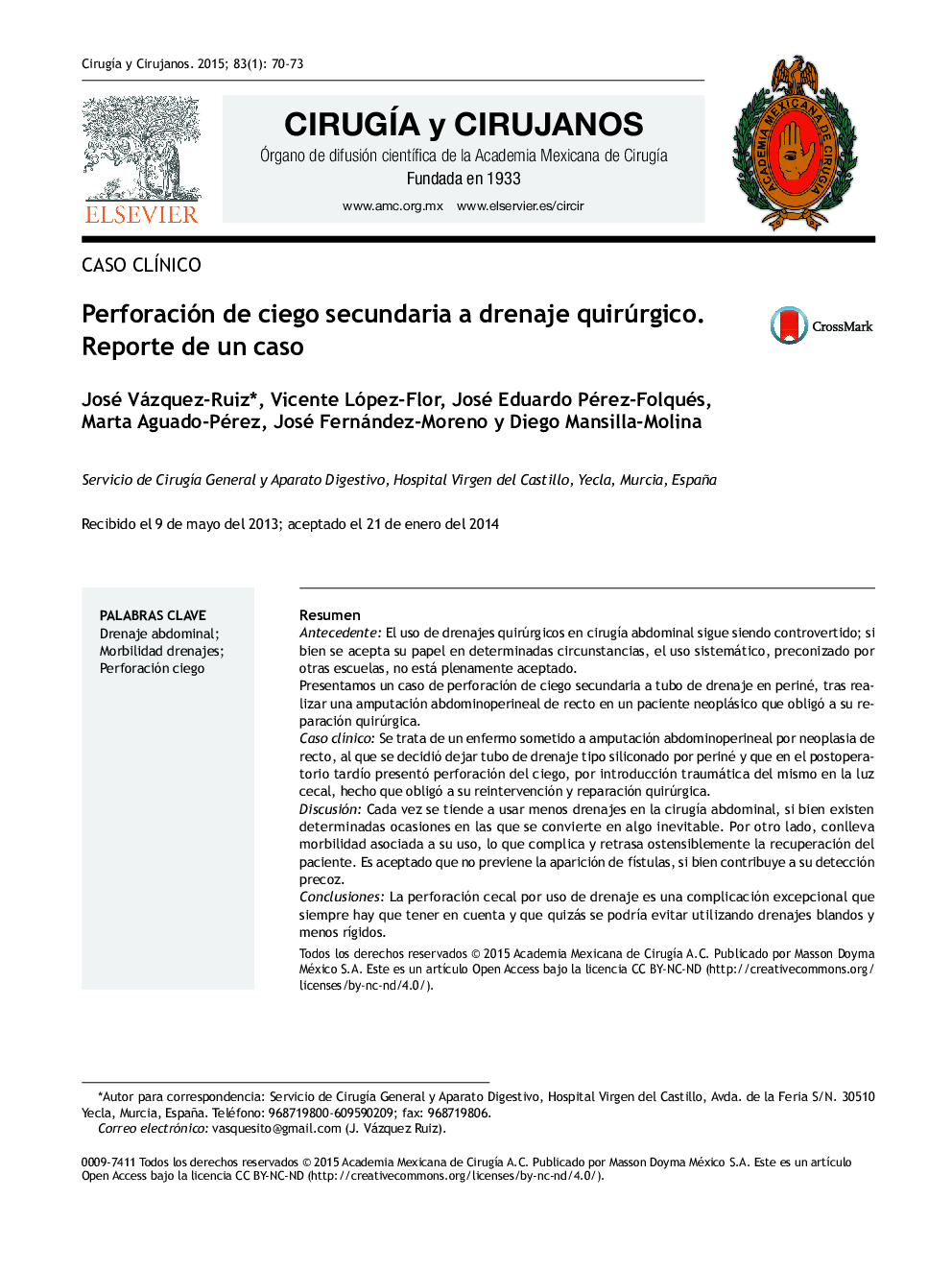| Article ID | Journal | Published Year | Pages | File Type |
|---|---|---|---|---|
| 4283210 | Cirugía y Cirujanos | 2015 | 4 Pages |
ResumenAntecedenteEl uso de drenajes quirúrgicos en cirugía abdominal sigue siendo controvertido; si bien se acepta su papel en determinadas circunstancias, el uso sistemático, preconizado por otras escuelas, no está plenamente aceptado.Presentamos un caso de perforación de ciego secundaria a tubo de drenaje en periné, tras realizar una amputación abdominoperineal de recto en un paciente neoplásico que obligó a su reparación quirúrgica.Caso clínicoSe trata de un enfermo sometido a amputación abdominoperineal por neoplasia de recto, al que se decidió dejar tubo de drenaje tipo siliconado por periné y que en el postoperatorio tardío presentó perforación del ciego, por introducción traumática del mismo en la luz cecal, hecho que obligó a su reintervención y reparación quirúrgica.DiscusiónCada vez se tiende a usar menos drenajes en la cirugía abdominal, si bien existen determinadas ocasiones en las que se convierte en algo inevitable. Por otro lado, conlleva morbilidad asociada a su uso, lo que complica y retrasa ostensiblemente la recuperación del paciente. Es aceptado que no previene la aparición de fístulas, si bien contribuye a su detección precoz.ConclusionesLa perforación cecal por uso de drenaje es una complicación excepcional que siempre hay que tener en cuenta y que quizás se podría evitar utilizando drenajes blandos y menos rígidos.
BackgroundThe use of surgical drains in abdominal surgery still remains controversial. While accepting their role in certain circumstances, their systematic use advocated by other schools, is not fully accepted.The case is presented of a caecal perforation secondary to a drainage tube in the perineum following an abdominal-perineal amputation of the rectum in a cancer patient that required surgical repair.Clinical caseThis is a patient who underwent abdominal-perineal resection for rectal neoplasia. It was decided to leave a silicone-type drain tube in the perineum, and in late postoperative he presented with a caecal perforation due to traumatic introduction of the drainage tube, which required further surgery to repair it.DiscussionThere is a tendency to use less and less drains in abdominal surgery, although there are certain occasions when it becomes unavoidable. On the other hand, the morbidity associated with its use significantly complicates and delays the recovery of the patient. It is accepted that is not useful to prevent the occurrence of fistulas, although it contributes to its early detection.ConclusionsCaecal perforation due to a drainage tube is a rare complication, which must always be taken into account, and that perhaps could be avoided by using soft and less rigid drains.
